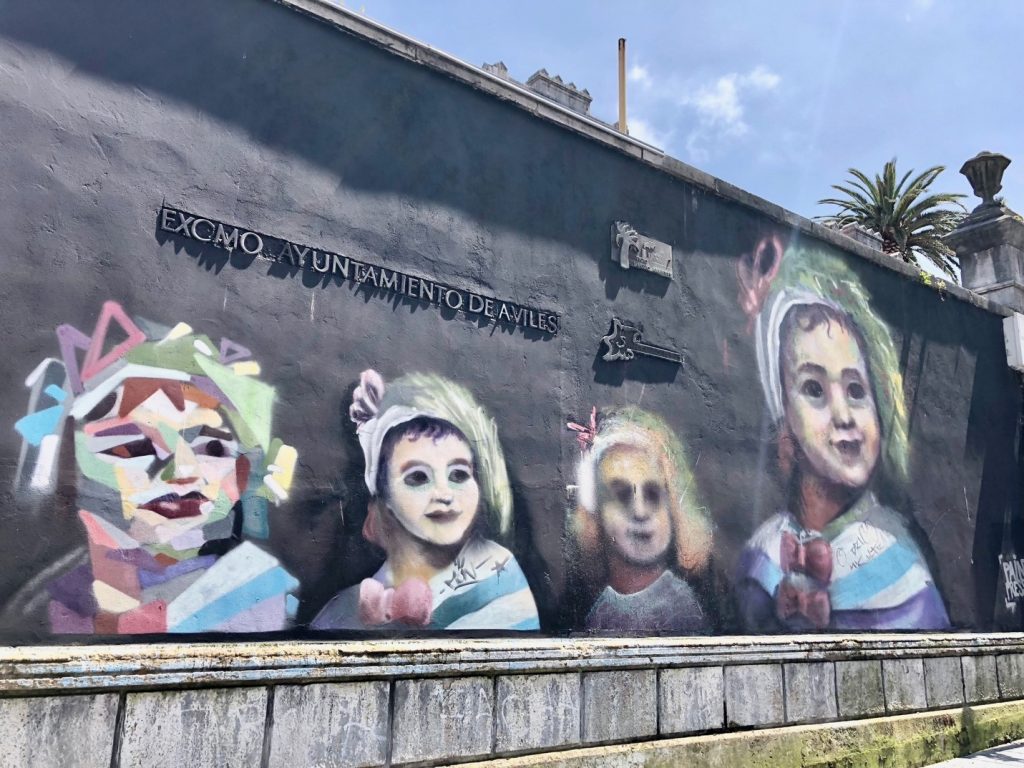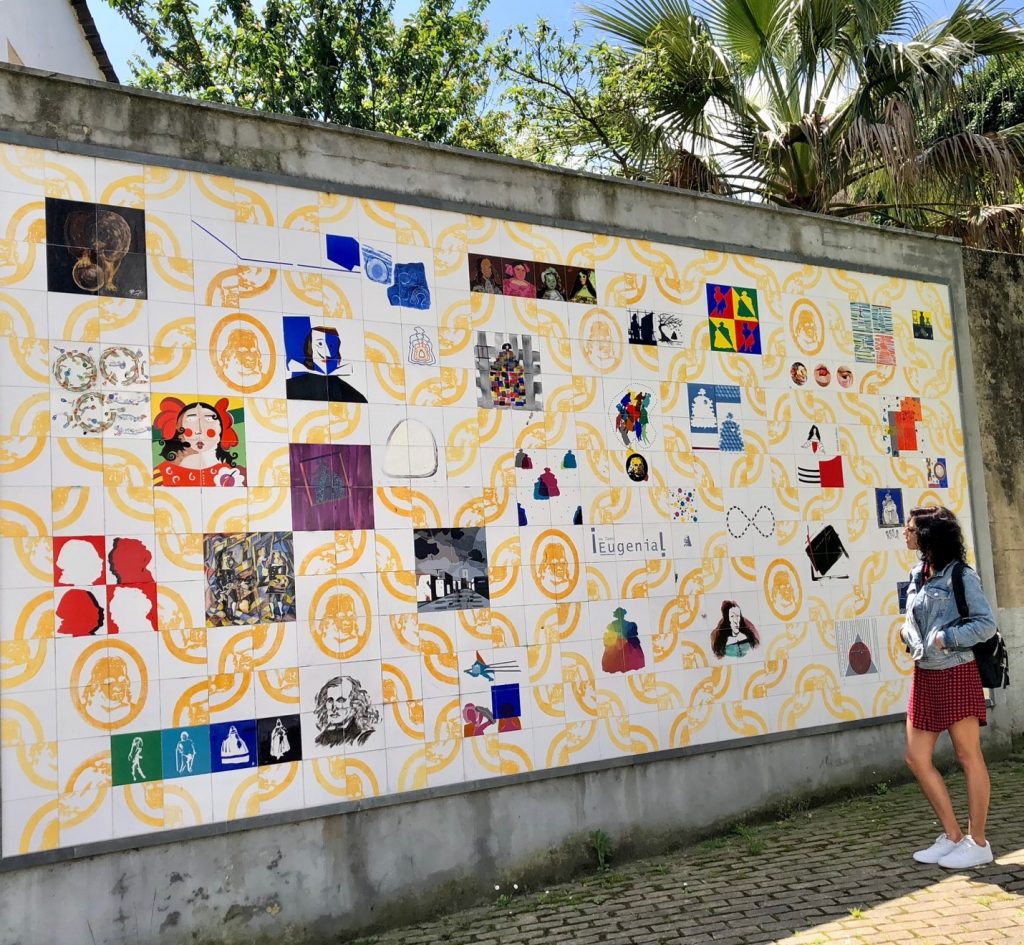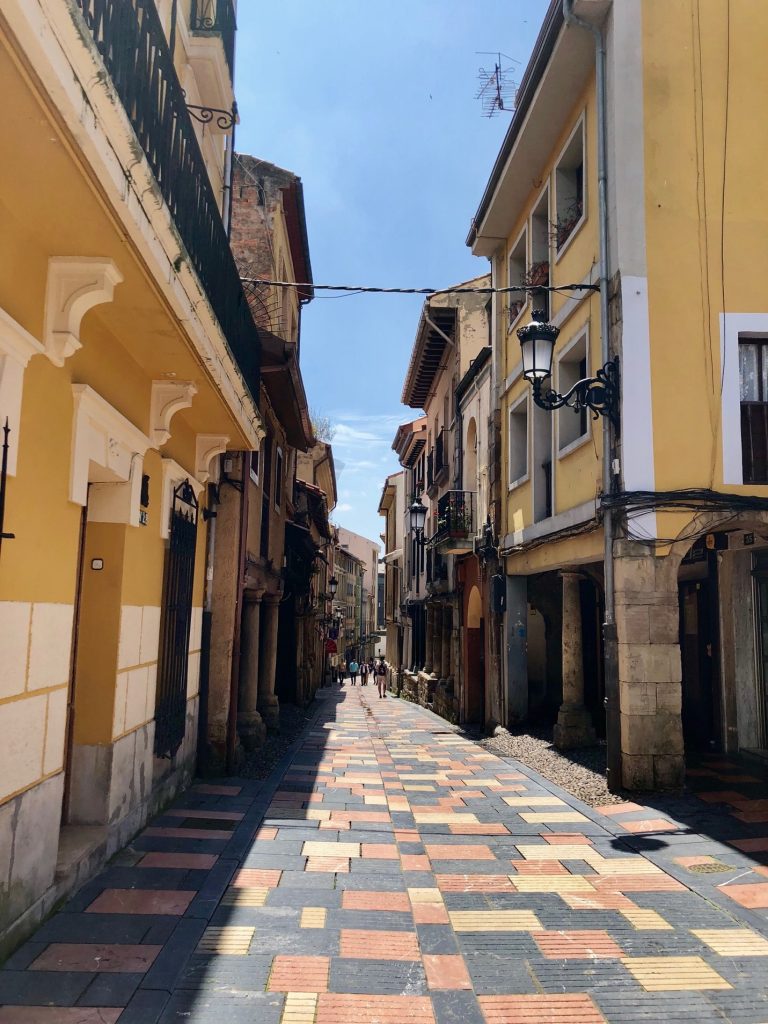
Jasmeen mural
Written by Jasmeen Kaur
6/18/2018
This weekend we explored Aviles, one of the three big cities of Asturias. It is an hour and half away from our residence, and we had to take two buses to get there. This town has a national seaport and it is an industrial area. This town also has one of the important churches the St. Thomas of Canterbury dating from the 13th century. There is a lot of street art and the narrow streets are so colorful and mesmerizing. There are natural spring water fountains everywhere in the town. We had lunch at a small restaurant “El Kafe De Jose”. The food was fresh and tasted amazing. We also went to the shopping center exploring local shops. The town is very historic and cultivated. It has one of the best harbors on the Cantabrian cost.
The weather has really been in favor of us. It rains during the week for a day or two, but weekends are very sunny and perfect for the trips to nearby towns and beaches. I have been enjoying my work more and more as I am becoming more experienced in the lab. Working in a microbiology and food technology lab made me realize how complicated it is to analyze foods at microscopic level and develop the technical procedures to process it, so it is safe to consume and available for public at an affordable cost. Food industry is heavily dependent upon the research institutes like IPLA. It is amazing to see how the research leads to functional products and its influence on human health. My lab particularly deals with the interactions between the dairy products and the human body. The main goal of our experiment is to develop a way to process dairy products in such a way that can eliminate the adverse effects of protein allergies on human body. After five weeks of research, we have developed a pasteurization method that can work best to process the whey from cheese. In the next few weeks, we will test that method on several samples and finalize it to make it an official method of treating whey. This will reduce the industrial waste, since Whey was just a byproduct of the production of cheese and it’s been thrown into rivers by the local farmers. Moreover, it can used into functional beverages of high nutrient quality.




